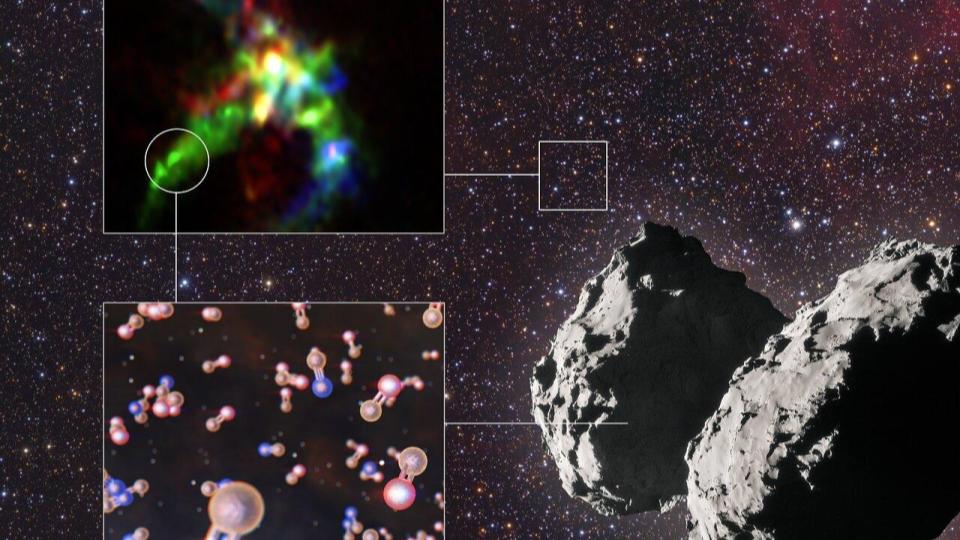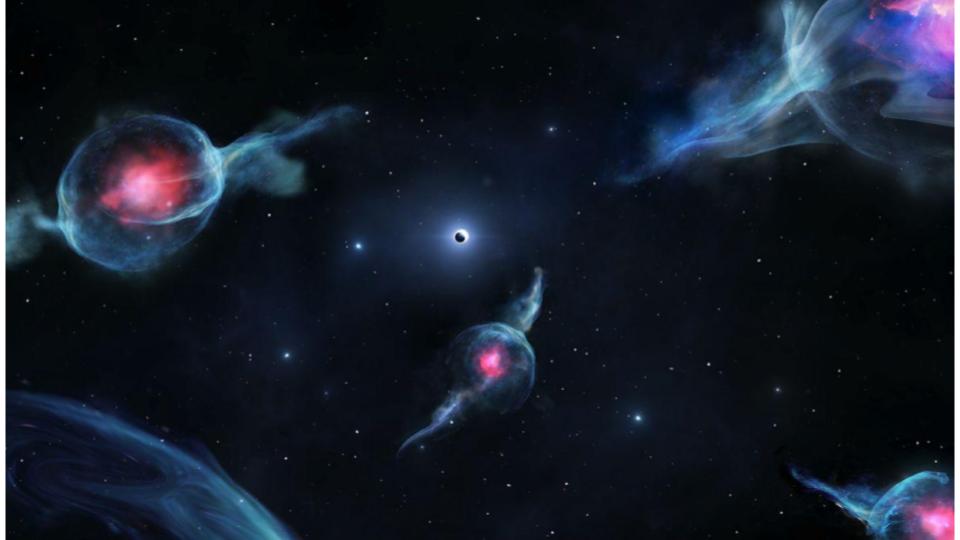Today’s news is all about weird stuff having a bad evolution. From the discovery of an asteroid destined to self-destruct on Venus or Mercury to comets bringing phosphorus to Earth one impact a time, to binary stars getting merged and pulled apart by Sag A* – let’s just say it’s a violent news day.
Today’s news comes at us from all directions and the only thread tying these stories together is a reminder that science is incremental, and is often a little bit violent.

Sometimes these incremental steps are small and seemingly inconsequential. For instance, yesterday CalTech announced the discovery of the first asteroid discovered to have an orbit that is totally contained within Venus’ orbit. This Sun-hugging rock falls into a theorized class of objects called Vatira asteroids. Because objects in this small of an orbit never get very far from the Sun’s position in the sky, they can’t be detected in most surveys, which keep their telescopes away from the horizon. This means that failure to see them in the past wasn’t really surprising, but their are they / aren’t they their unobserved nature was a curiosity. Now, thanks to observations by the Zwick Transient Factory and its twilight observing project, we know there is at least 1 Vatira asteroid. This object was discovered on January 4 and followup observations allowed a rapid measurement of its orbit. Named 2020 AV2, this object is 1 to 3 km in diameter and orbits the sun every 151 days. It’s orbit isn’t round, but rather swings out near Venus’ orbit before plunging in close to Mercury’s orbit. This isn’t the most stable way for a large rock to orbit, and scientists suspect that gravitational tugs from Mercury and Venus will eventually send this object careening into one of these two dead surfaces. In fact, this could be the fate for most objects that end up in this kind of an object… so now the questions are, how many of these objects are out there, and how cool would it be to get to see a 1-3 km object smack into an unoccupied inner planet.

Stuff smacking into other stuff is really how science accomplishes a lot of things. In a new paper in the MNRAS with lead author Victor Rivilla, astronomers reveal phosphorous was delivered to Earth through impacting comets. This isn’t to say this is the only way we get phosphorous on Earth, but it is a particularly dramatic way that would have helped get many of the ingredients of life smacked into the same place. New observations from the ALMA found that phosphorus monoxide forms in the dust and gas clouds of star forming regions in the walls around forming giant stars. This material is subjected to shocks and radiation from the infant giant stars, leading to the production of this phosphorus rich molecule, and this material goes on to fall into the outskirts of forming smaller star systems, where it gets incorporated into comet materials. The Rosetta mission found phosphorus in the comet 67P-Churyumov–Gerasimenko. Since we know our world was hit with a myriad of small bodies, including comets and asteroids, in the past, it’s believed this is one of the ways Earth got the phosphorus that is necessary for life – one impact at a time.
Looking at the history of our universe, we see that everything evolves through interactions. From collisions to shocks to even the stretching violence of tidal forces, it is the interplay of objects through gravity that builds things up and breaks them down.

Filed under things that are both getting merged together and torn apart are a new class of objects found orbiting our galaxy’s supermassive blackhole. I finally got my hands on the full article only an hour before we recorded this episode, so I’m only going to touch on this story today. I’m planning an update on the inner galaxy for next Tuesday. Here is the TL;DR version (and I mean too late; didn’t read): 6 blobs have been found orbiting in the innermost part of our galaxy. Each blob is roughly the size of a solar system – about 100 AU across – and orbits like a single object rather than like a cloud. These objects are nice and star like, albeit huge, for most of their 100 to 1000 year long orbits, but get stretched out into streams as they fly past, Sag A*, the supermassive black hole in the heart of our galaxy. The best explanation for these weird objects is that they are binary stars that were driven into merging orbits through their interactions with Sag A* until they eventually became essentially one bloated object. Every time these pairs pass near Sag A* they have gas striped off and get a little bit smaller. Eventually that gas will fall into the black hole and give off some fantastic radiation. There is a lot more nuance to this story, and I look forward to devouring the research paper and bringing you deeper explanations next week.
<———————>
And that rounds out our show for today.
Thank you all for listening. The Daily Space is produced by Susie Murph, and is a product of the Planetary Science Institute, a 501(c)3 non profit dedicated to exploring our Solar System and beyond. We are here thanks to the generous contributions of people like you. Want to become a supporter of the show? Check us out at Patreon.com/cosmoquestx
Each live episode of the Daily Space is archived on YouTube. If you miss an episode on Twitch.tv, you can find it later on youtube.com/c/cosmoquest. These episodes are edited and produced by Susie Murph.
We are here thanks to the generous contributions of people like you who allow us to pay our staff a living wage. Every bit, every sub, and every dollar committed on Patreon.com/cosmoquestx really helps. If you can’t give financially, we really do understand, and there are other ways you can help our programs. Right now, the best way you can help is to get the word out. Let your friends know, share our channel to your social media, or leave a recommendation. You never know what doors you are opening.
We really wouldn’t be here without you – thank you for all that you do.


 We record most shows live, on Twitch. Follow us today to get alerts when we go live.
We record most shows live, on Twitch. Follow us today to get alerts when we go live.